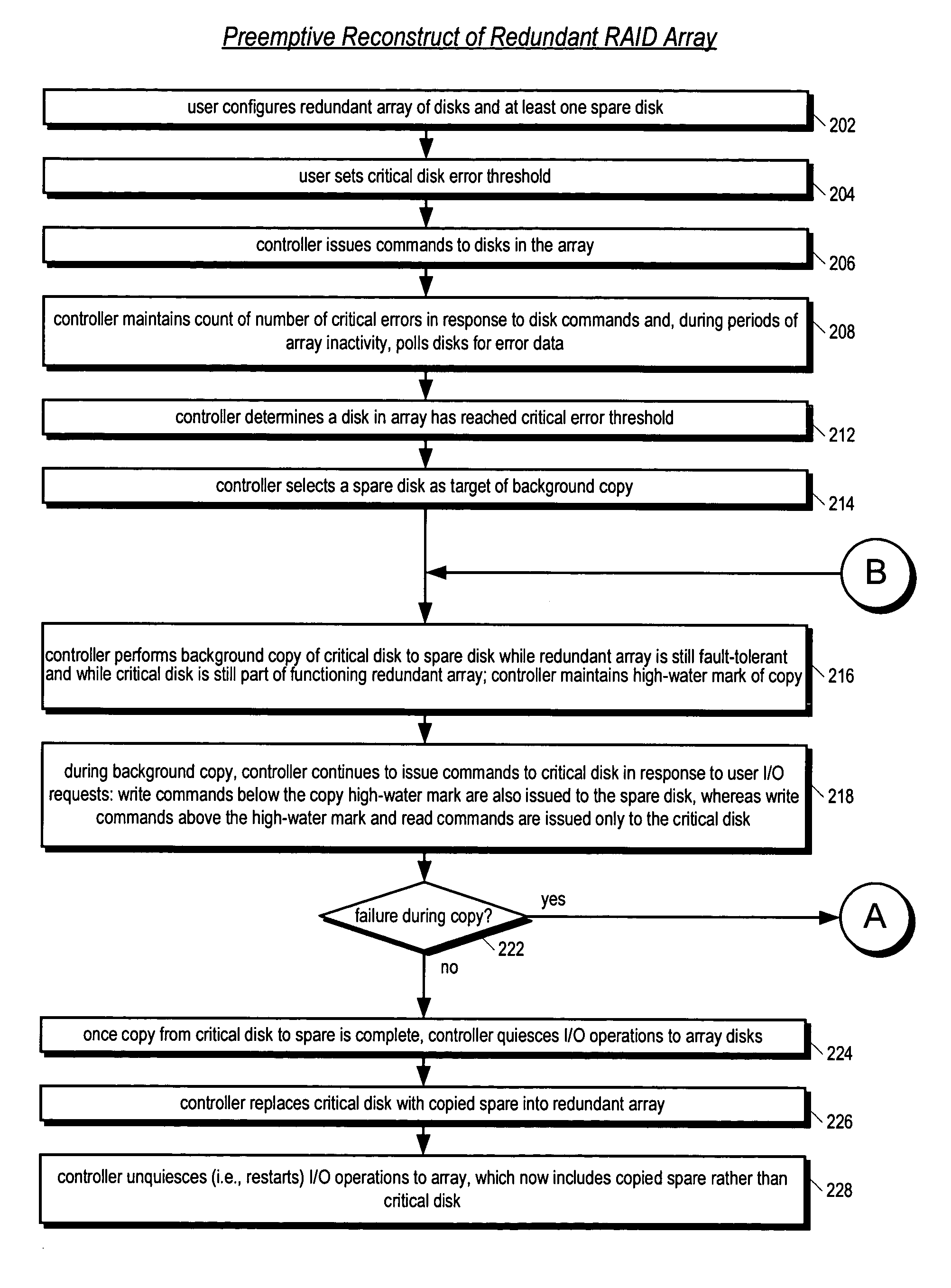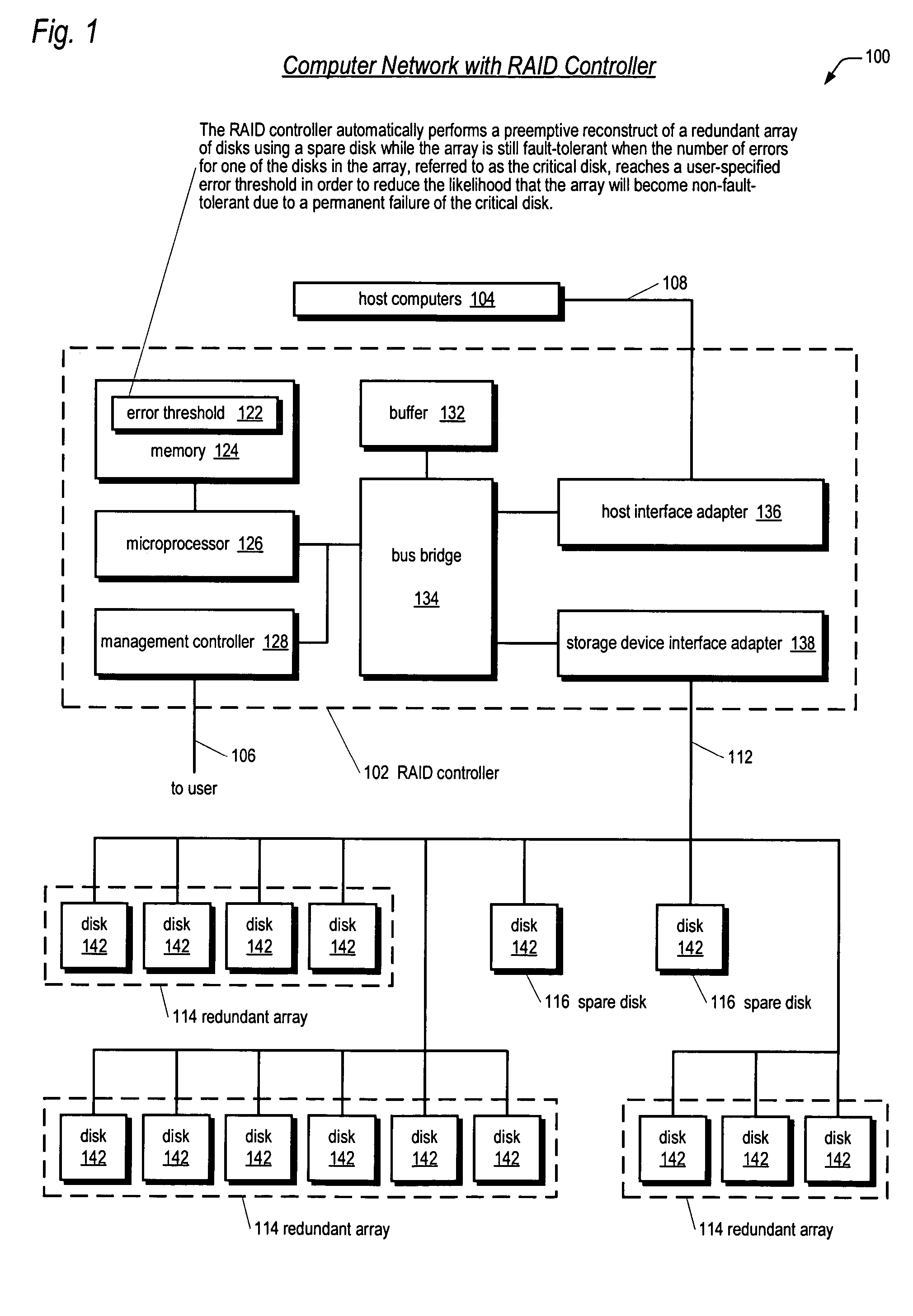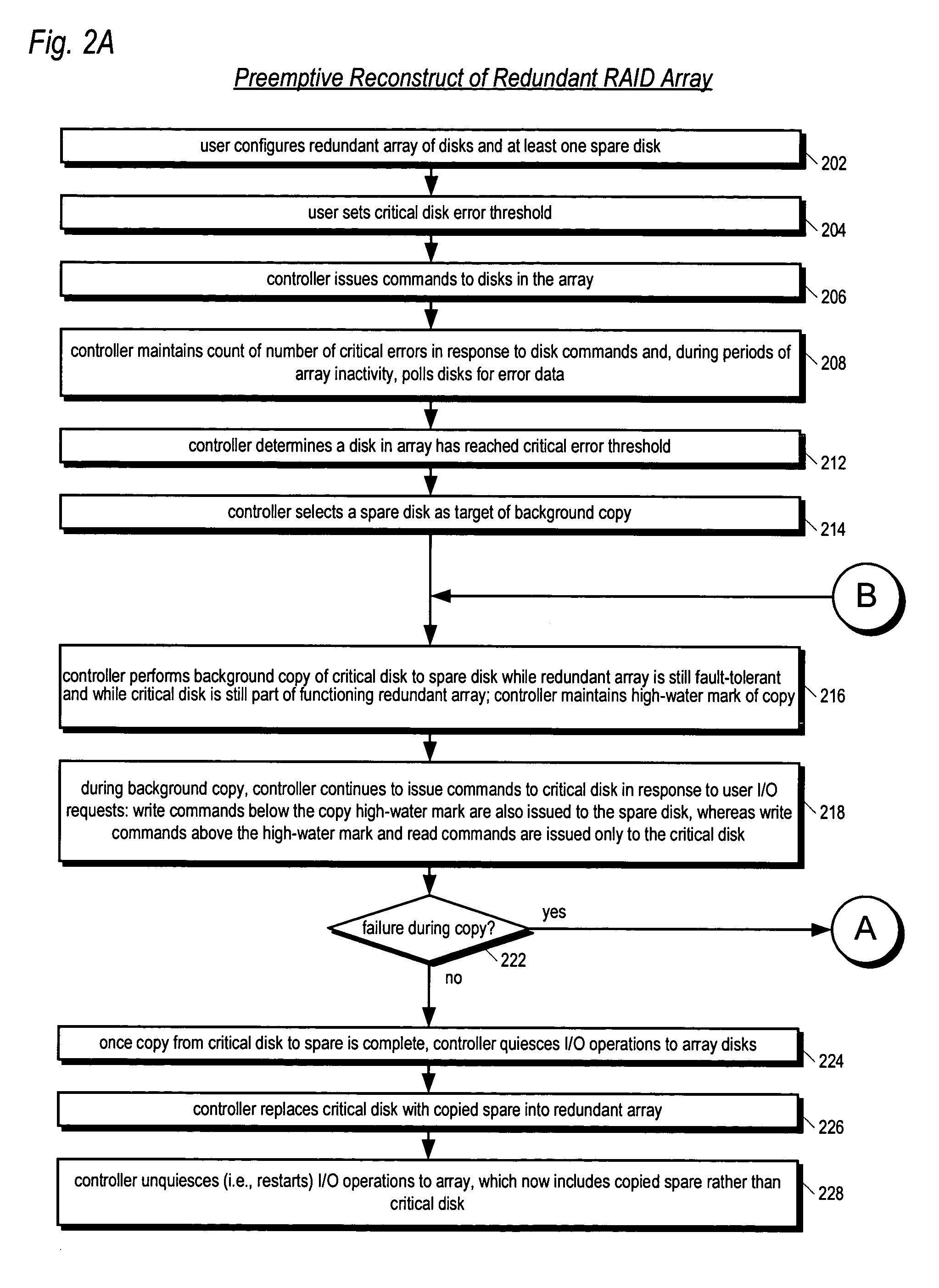Apparatus and method for performing a preemptive reconstruct of a fault-tolerant RAID array
a raid array and preemptive reconstruction technology, applied in the field of raid arrays of inexpensive disks (raid) controllers, can solve the problems of reducing mtbf, and affecting the reliability of raid arrays as a whole, so as to reduce the probability of data loss, reduce the chance of user error, and reduce the time
- Summary
- Abstract
- Description
- Claims
- Application Information
AI Technical Summary
Benefits of technology
Problems solved by technology
Method used
Image
Examples
Embodiment Construction
[0030]Referring now to FIG. 1, a computer network 100 including a RAID controller 102 according to the present invention is shown. The network 100 includes one or more host computers 104 coupled to a RAID controller 102 and a plurality of disks 142, or disk drives 142, coupled to the RAID controller 102.
[0031]In one embodiment, the disks 142 comprise, but are not limited to, hard disk drives. However, the disks 142 may comprise, but are not limited to, any permanent storage device, such as tape drives or optical drives. The disks 142 are coupled to the RAID controller 102 via a storage device transport medium 112. The storage device transport medium 112 and the protocols performed on it may include, but are not limited to, FibreChannel (FC), Advanced Technology Attachment (ATA), Serial Advanced Technology Attachment (SATA), Small Computer Systems Interface (SCSI), Serial Attached SCSI (SAS), HIPPI, ESCON, FICON, Ethernet, Infiniband, or relevant combinations thereof. The disks 142 a...
PUM
 Login to View More
Login to View More Abstract
Description
Claims
Application Information
 Login to View More
Login to View More - R&D
- Intellectual Property
- Life Sciences
- Materials
- Tech Scout
- Unparalleled Data Quality
- Higher Quality Content
- 60% Fewer Hallucinations
Browse by: Latest US Patents, China's latest patents, Technical Efficacy Thesaurus, Application Domain, Technology Topic, Popular Technical Reports.
© 2025 PatSnap. All rights reserved.Legal|Privacy policy|Modern Slavery Act Transparency Statement|Sitemap|About US| Contact US: help@patsnap.com



